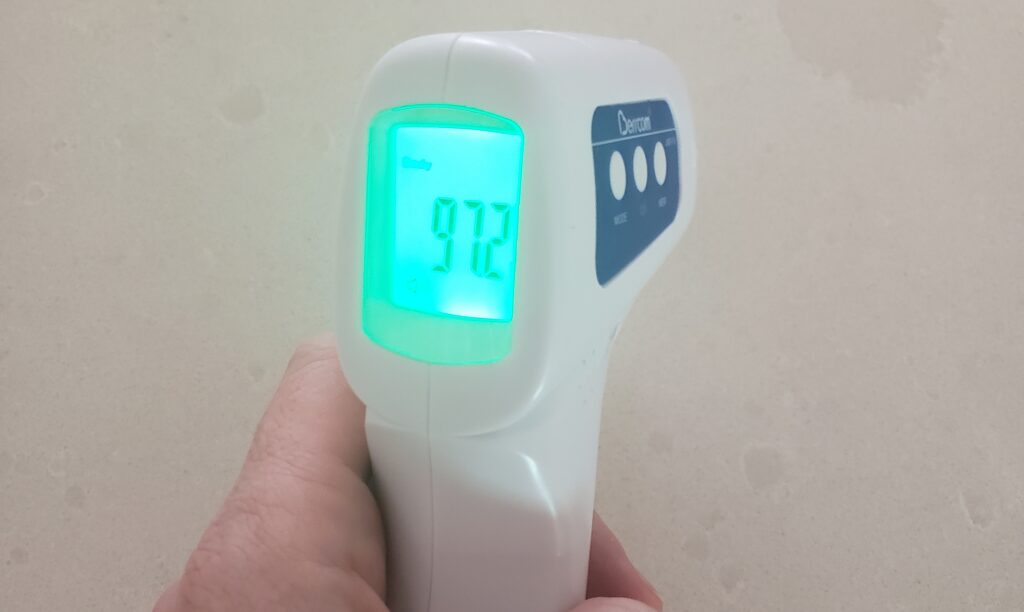To work well, an infrared thermometer needs to be aimed directly at the forehead. [Credit: Allison Wallis]
(HONOLULU) — Infrared thermometers are everywhere. It’s nearly impossible to run errands or visit a doctor’s office without having your temperature checked upon entry. These measures are in place to reduce the public’s contact with possibly infected COVID-19 patients. But the problem is that infrared thermometers can be inaccurate if misused.
Infrared thermometers are quick and relatively easy to use. They are also easy to use incorrectly, which may result in a false sense of security. If the thermometer isn’t the correct distance from the forehead, they can give improper readings. They can also be incorrect due to environmental conditions such as wind or heat from the sun.
Some people improperly assume that if a person isn’t running a fever, then they’re free of COVID-19 and not at risk of infecting others. But according to the World Health Organization, it is possible to be a carrier of COVID-19 without fever symptoms, especially in the early days, while the infection is developing in the person’s body. Some people could be on fever-reducing medications, which would prevent them from being flagged by the thermometer.
“My fear is that for someone who’s not necessarily cautious, [if] they have a normal temp and think they’re fine, that’s not necessarily true,” said Honolulu Pediatrician Dr. Kenn Saruwatari.
Infrared thermometers should be held within a few inches of the person’s forehead and used head-on, rather than at an angle. The further away, the lower the temperature, leading to potential inaccuracies. The FDA also notes that “the close distance required to properly take a person’s temperature represents a risk of spreading disease between the person using the device and the person being evaluated.”
The instruction manual for a Berrcom non-contact infrared thermometer contains warnings. The instructions warn users to avoid using the thermometer in relative humidity higher than 85 percent; to wait 30 minutes before use after exercising, bathing, or spending time outside; and to ensure that the person being tested has a clean, dry forehead. The manual also states that the device should be recalibrated when used on people with different skin tones, which is difficult to do when screening numerous people.
Other impediments to getting an accurate read include wearing items on the head such as hats, wigs, and bandanas. The surrounding ambient temperature can also impact results, especially if the individual’s temperature is being taken outdoors in the sunshine.
With the second wave of COVID-19 now affecting many U.S. states, including Illinois, Tennessee, and Nebraska, the need for accurate temperature readings will remain vital.
“You’ve gotta use it right,’’ said Dr. Saruwatari. “It may measure a reading if you’re 10 centimeters away, but that doesn’t mean it’s accurate.”


